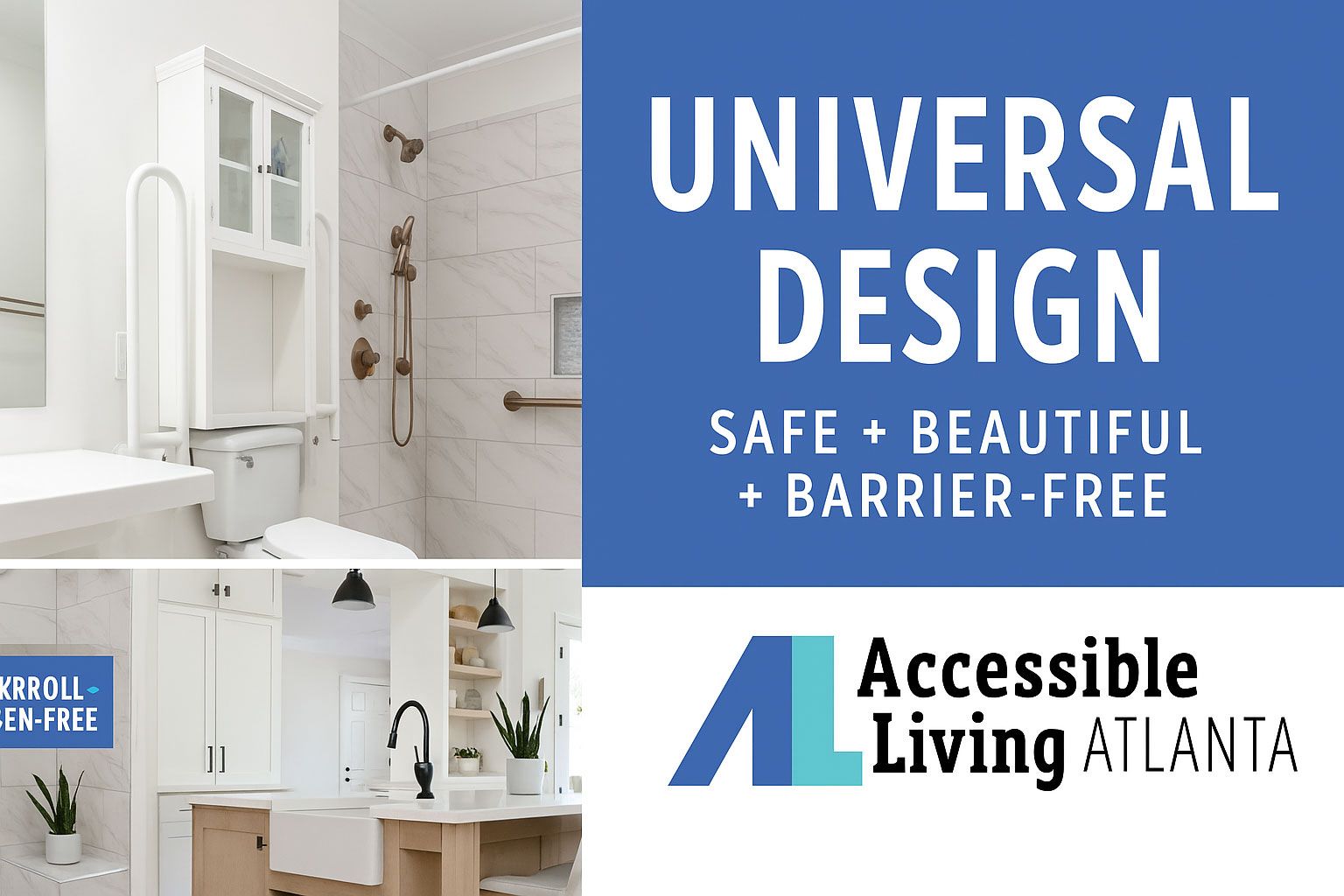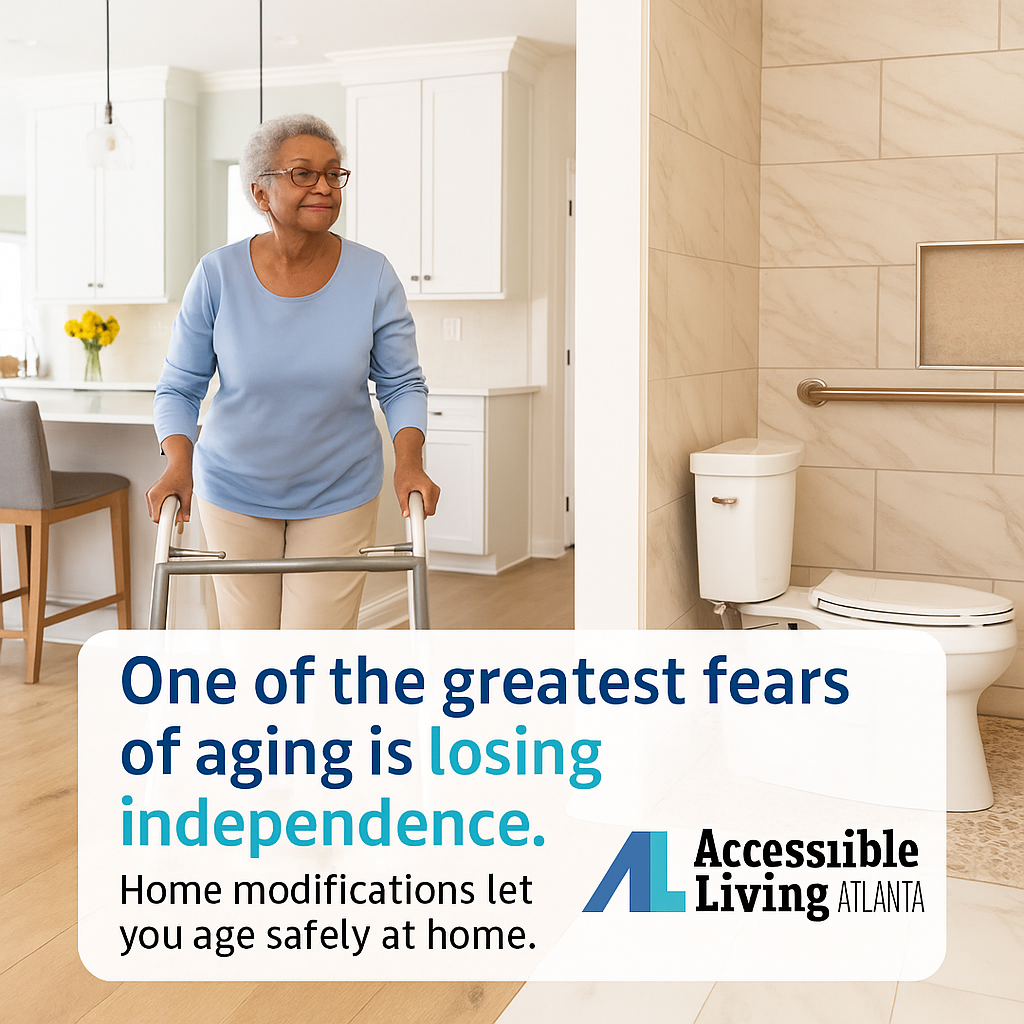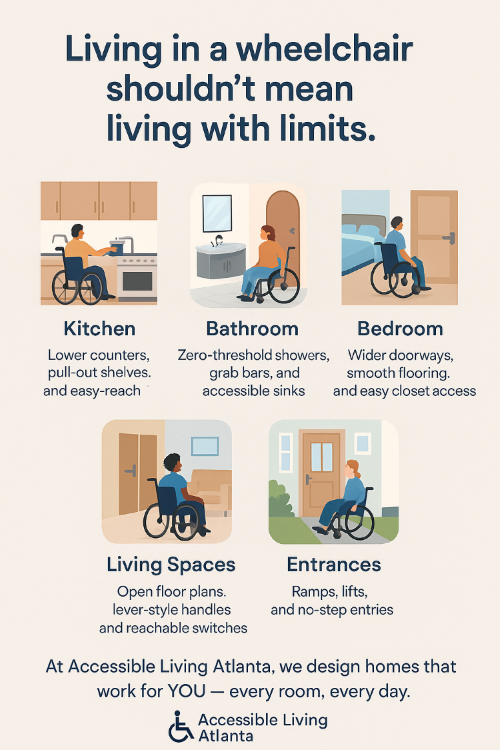How Home Modifications Support Both Homeowners and Caregivers
Bathroom Modifications: Safer and Easier for All
Bathrooms are one of the most common areas where accidents occur—and one of the most challenging spaces for caregivers. Without modifications, assisting with bathing or toileting can require awkward lifts, balancing, or constant worry about falls.
With improvements such as curbless showers, strategically placed grab bars, and comfort-height toilets, everyday routines become safer and less stressful. These features mean fewer heavy transfers for caregivers and more dignity and independence for homeowners.
Entryways and Ramps: Removing Daily Obstacles
What seems like a small barrier—a step into the home—can actually be one of the biggest sources of stress for caregivers. Helping a loved one in a wheelchair or walker navigate stairs is physically demanding and potentially unsafe.
Ramps and zero-step entries remove that daily struggle. Instead of lifting, balancing, or worrying about trips and falls, caregivers can focus on simply getting in and out of the house with ease.
Room-by-Room Accessibility: Reducing Strain and Stress
The layout of a home plays a big role in the caregiving experience. Narrow doorways, tight hallways, or poorly placed furniture and appliances can make daily care exhausting.
By widening doorways, creating open layouts, and ensuring smooth transitions between rooms, caregivers spend less time straining and more time focusing on what matters most, supporting their loved one’s quality of life.
The Shared Benefits of Accessibility
When a home is designed with accessibility in mind, everyone benefits. Homeowners gain safety, independence, and confidence. Caregivers gain relief, reduced physical risk, and the freedom to focus on meaningful time together instead of constant physical strain.
At Accessible Living Atlanta, we believe that home modifications should be both functional and aesthetically pleasing—creating spaces where safety and dignity are built into the environment itself.
Home modifications aren’t just about the homeowner. They’re about creating a supportive, sustainable environment for caregivers, too.
If you’d like to learn more about how we can help transform your home into a safe and supportive place for you and your loved ones, reach out to Accessible Living Atlanta today.




